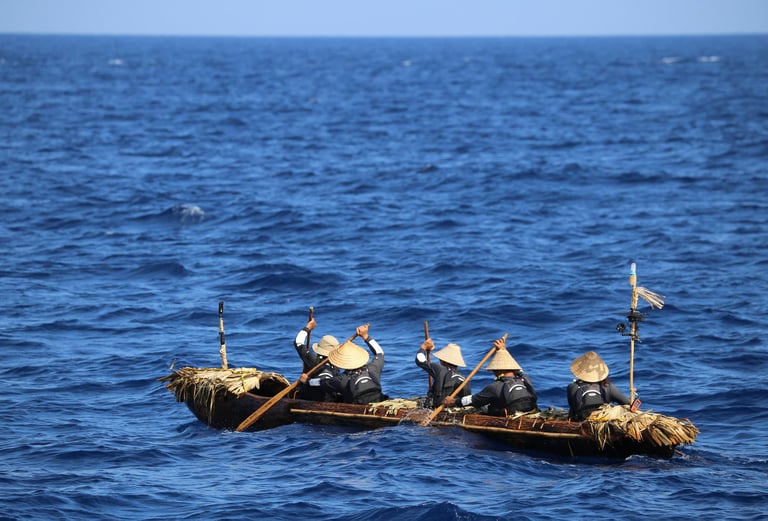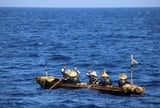Ancient Seafarers: How Early Humans Mastered Ocean Voyages Without Maps
July 6, 2025
Recent research highlights that Paleolithic humans were capable of complex seafaring, using environmental signs and celestial cues for navigation, much like Polynesian navigators, without the aid of maps.
Studies suggest that early humans undertook significant strategic challenges to explore and settle remote islands, demonstrating a high level of sophistication in their seafaring and migration techniques.
Experimental archaeology included building and paddling a canoe over 100 kilometers and using computer simulations to show that crossing the powerful Kuroshio Current was feasible with the technology and knowledge available at the time.
Archaeological evidence indicates that early modern humans migrated from Taiwan to southern Japan around 30,000 years ago using primitive seafaring methods.
A Japanese-Taiwanese team reconstructed a Paleolithic dugout canoe called Sugime, carved from Japanese cedar, and successfully undertook a 225-kilometer ocean voyage from Taiwan to Yonaguni Island, relying solely on natural navigation cues.
Simulations showed that launching from northern Taiwan and employing specific paddling strategies increased the likelihood of successful crossings, revealing that early seafarers possessed advanced strategic ocean knowledge.
Summary based on 1 source
Get a daily email with more Science stories
Source

SciTechDaily • Jul 6, 2025
Archaeologists Solve Mystery of the 30,000-Year-Old Ocean Crossing